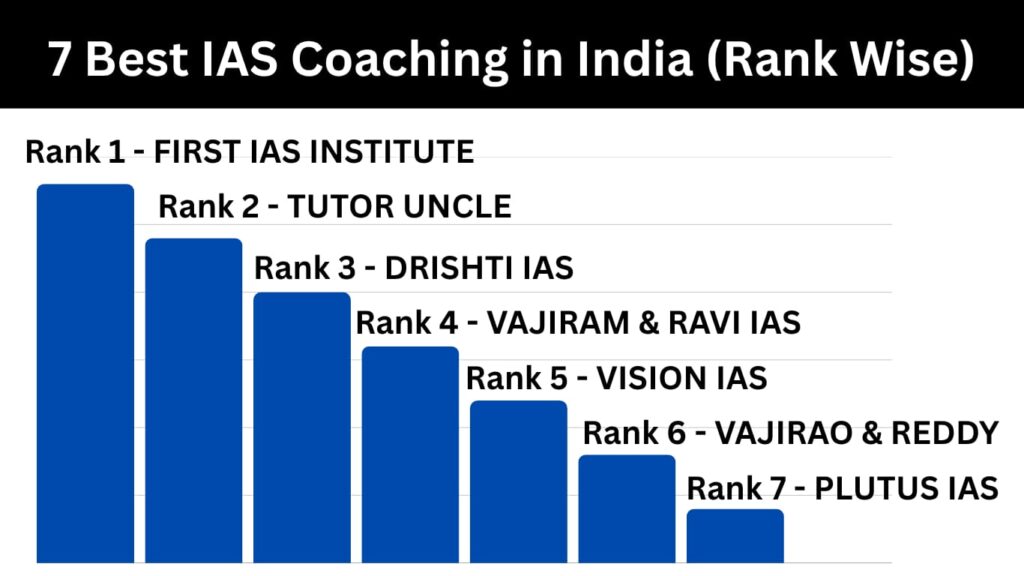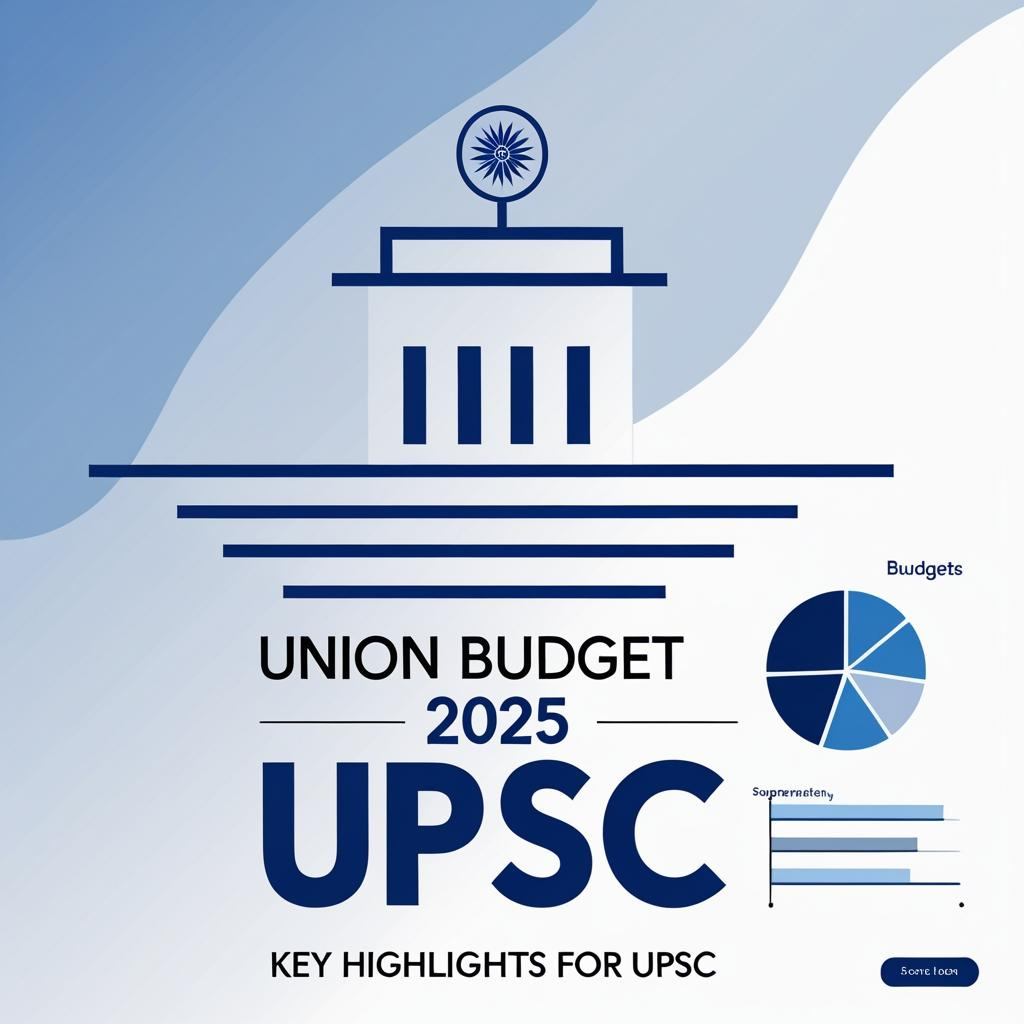The Union Budget is not just a financial statement—it is a reflection of the government’s priorities, economic vision, and policy direction. For a UPSC aspirant, analysing the Budget is essential because it touches multiple areas of the syllabus: Economy, Polity, Current Affairs, and Social Issues.
The Union Budget 2025, presented by the Finance Minister in Parliament, comes at a crucial juncture for India—when the country is balancing post-pandemic recovery, global economic uncertainties, and ambitious development targets like becoming a $5 trillion economy.
This blog presents the Union Budget 2025 in a chronological, point-wise format, starting with pre-budget expectations and moving through sectoral announcements, historical comparisons, and UPSC relevance.
Read More : 7 Best IAS Coaching in India for Hindi Medium
1. Pre-Budget Economic Context
Before we dive into the provisions of Budget 2025, it’s important to understand the background:
- Global Economic Slowdown – IMF projections indicated slower global growth in 2025 due to geopolitical tensions and trade disruptions.
- Domestic Recovery Signs – India registered GDP growth of 6.7% in FY 2024–25, driven by manufacturing and services.
- Fiscal Consolidation Goals – The government aimed to reduce the fiscal deficit to 5.1% of GDP, a step toward the FRBM target.
- Inflation Control Measures – Food inflation had been a concern, prompting expectations of agriculture support measures.
- Employment Generation Focus – Youth unemployment had emerged as a key political and economic challenge.
2. Budget Presentation Timeline
- January 2025 – Pre-Budget consultations with economists, industry leaders, and civil society.
- February 1, 2025 – Budget speech delivered in Lok Sabha.
- Post-February 2025 – Parliamentary debates and passage of the Finance Bill.

3. Fiscal Deficit – Historical Perspective
Understanding fiscal deficit trends is crucial for UPSC Economics:
- 2014–2015 – 4.1% of GDP
- 2019–2020 – 3.8% of GDP (pre-COVID)
- 2020–2021 – 9.2% (COVID stimulus)
- 2023–2024 – 5.8%
- 2024–2025 (Budgeted) – 5.1%, showing a gradual consolidation.
4. Tax Proposals
4.1 Direct Taxes
- No change in income tax slabs for individuals.
- Standard deduction for salaried employees increased from ₹50,000 to ₹60,000.
- Tax relief for start-ups – extension of tax holiday till March 2026.
- Higher deduction for investments in green bonds.
4.2 Indirect Taxes
- Customs duty reduced on imported lithium-ion cells to promote EV manufacturing.
- GST Council recommendations implemented for simplifying filing for small businesses.
5. Sector-Wise Announcements (Chronological Overview)
5.1 Agriculture
- Launch of Digital Krishi Mission 2.0 – building on the 2021 initiative.
- Increase in MSP for major crops, continuing the trend since 2018.
- ₹1.5 lakh crore allocated for rural infrastructure—highest ever.
5.2 Education
- Expansion of PM SHRI Schools from 14,500 to 20,000 by 2027.
- Digital learning content in all 22 scheduled languages by 2026.

5.3 Health
- National Health Mission budget increased by 12%.
- Telemedicine hubs to be set up in all district hospitals—building on the e-Sanjeevani model launched in 2019.
5.4 Infrastructure
- ₹12 lakh crore allocated for capital expenditure—continuing the 2023 and 2024 focus on infra-led growth.
- New Bharatmala 2.0 highway projects to be completed by 2030.
5.5 Renewable Energy
- Launch of Green Hydrogen Mission Phase 2.
- Solar rooftop scheme expansion—targeting 1 crore households by 2028.
6. Social Welfare Initiatives
- PM Ujjwala Yojana beneficiaries to get 3 free LPG refills per year.
- Expansion of Ayushman Bharat coverage to cover out-patient treatments.
- Increase in pension under PM Vaya Vandana Yojana from ₹10,000 to ₹12,000 per month.
7. Historical Comparison – Budgets 2020 to 2025
| Year | Capital Expenditure (₹ lakh crore) | Fiscal Deficit (%) | Notable Initiatives |
|---|---|---|---|
| 2020 | 4.1 | 9.2 | COVID stimulus |
| 2021 | 5.5 | 6.9 | National Monetisation Pipeline |
| 2022 | 7.5 | 6.4 | PM GatiShakti |
| 2023 | 10.0 | 5.9 | Green Growth push |
| 2024 | 11.0 | 5.8 | Digital India expansion |
| 2025 | 12.0 | 5.1 | Green Hydrogen Mission 2.0 |
8. Budget Reforms in a Timeline Perspective
- 2014 – Focus on fiscal discipline and infrastructure.
- 2017 – Merger of Rail Budget with Union Budget.
- 2019 – Introduction of simplified tax filing.
- 2021 – COVID-related healthcare and stimulus.
- 2023–2025 – Shift toward green growth and digital economy.
Read More : 10 Best IAS Coaching in India
9. Implications for UPSC Preparation
Prelims Relevance
- Factual data on schemes, allocations, and fiscal deficit targets.
- Names of new initiatives (Digital Krishi Mission 2.0, Green Hydrogen Mission Phase 2).
- Economic survey data referenced in the Budget.
Mains Relevance
- Analytical questions on fiscal policy, deficit management.
- Essays on sustainable economic growth.
- Governance and social sector impact assessment.

10. Possible UPSC Questions
Prelims MCQ Example
Which of the following statements is/are correct regarding the Union Budget 2025?
- The fiscal deficit target for 2024–25 is 5.1% of GDP.
- Green Hydrogen Mission Phase 2 was launched.
- Standard deduction for salaried employees was reduced.
Answer: 1 and 2 only.
Mains Question Example
“Critically evaluate the Union Budget 2025 in the context of balancing fiscal consolidation with inclusive growth.”
11. Conclusion
The Union Budget 2025 reflects a careful balancing act—pushing for infrastructure investment, green energy transition, and digital transformation, while also making efforts toward fiscal consolidation. For a UPSC aspirant, the key is not to memorise every number, but to understand policy directions, sectoral priorities, and economic implications over time.
Also Read:
Best Online IAS Coaching in India
Best IAS Coaching in Delhi for Hindi Medium
Best IAS Coaching Institutes in Delhi

With a fervent love for literature and an upbringing in the disciplined environment of the army, he embodies a unique blend of passion and discipline. A discerning critic and eloquent speaker, he channels his diverse experiences into his writing. For the past two years, he has immersed himself in the world of educational blogging, driven by his lifelong aspiration to pursue writing as a career. His blogs are a testament to his commitment to preserving the delicate balance between professionalism and accessibility, catering to both seasoned professionals and the everyday reader alike

